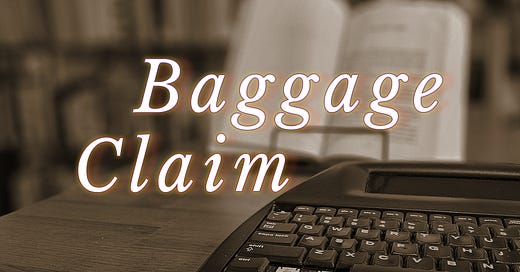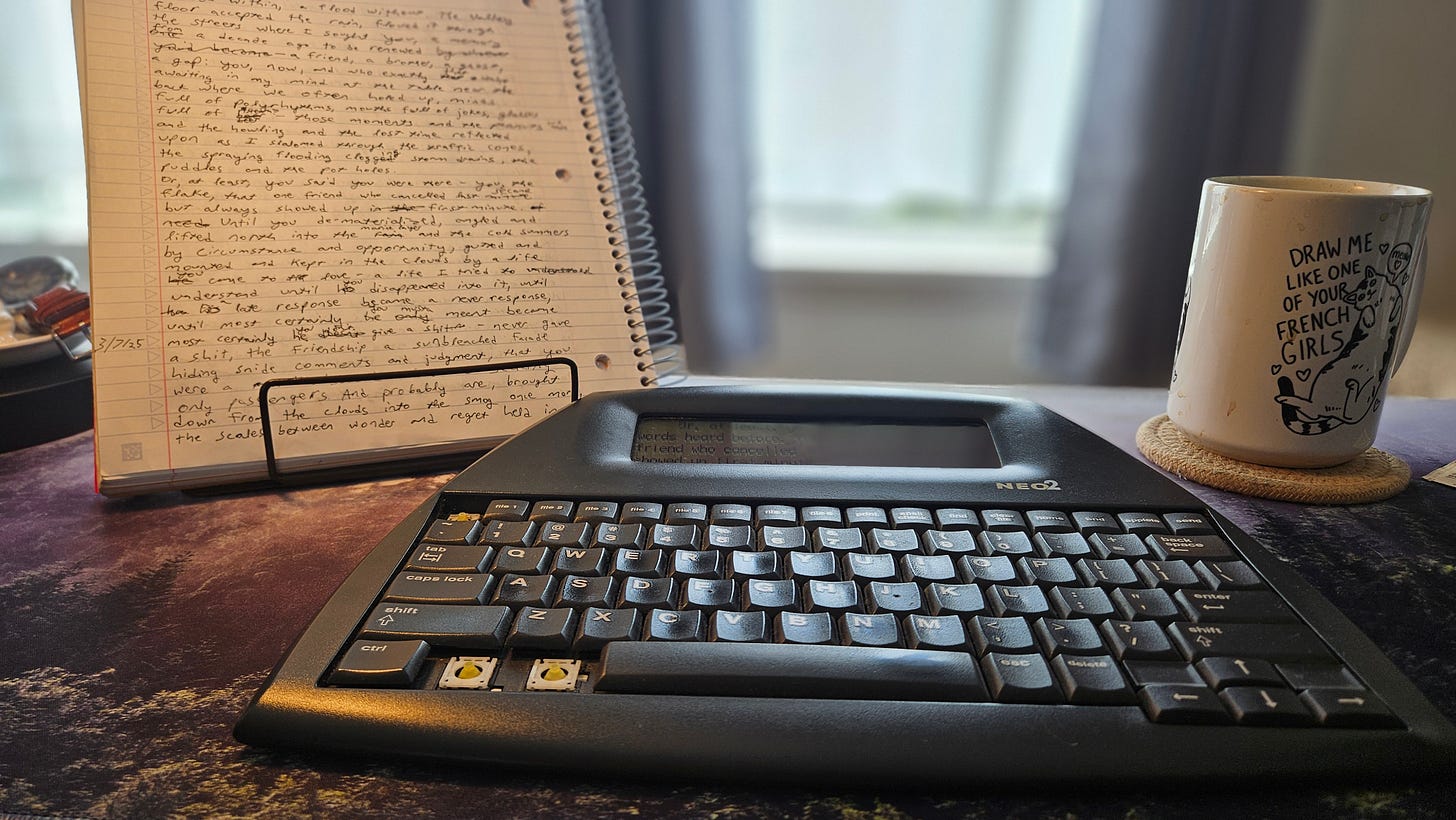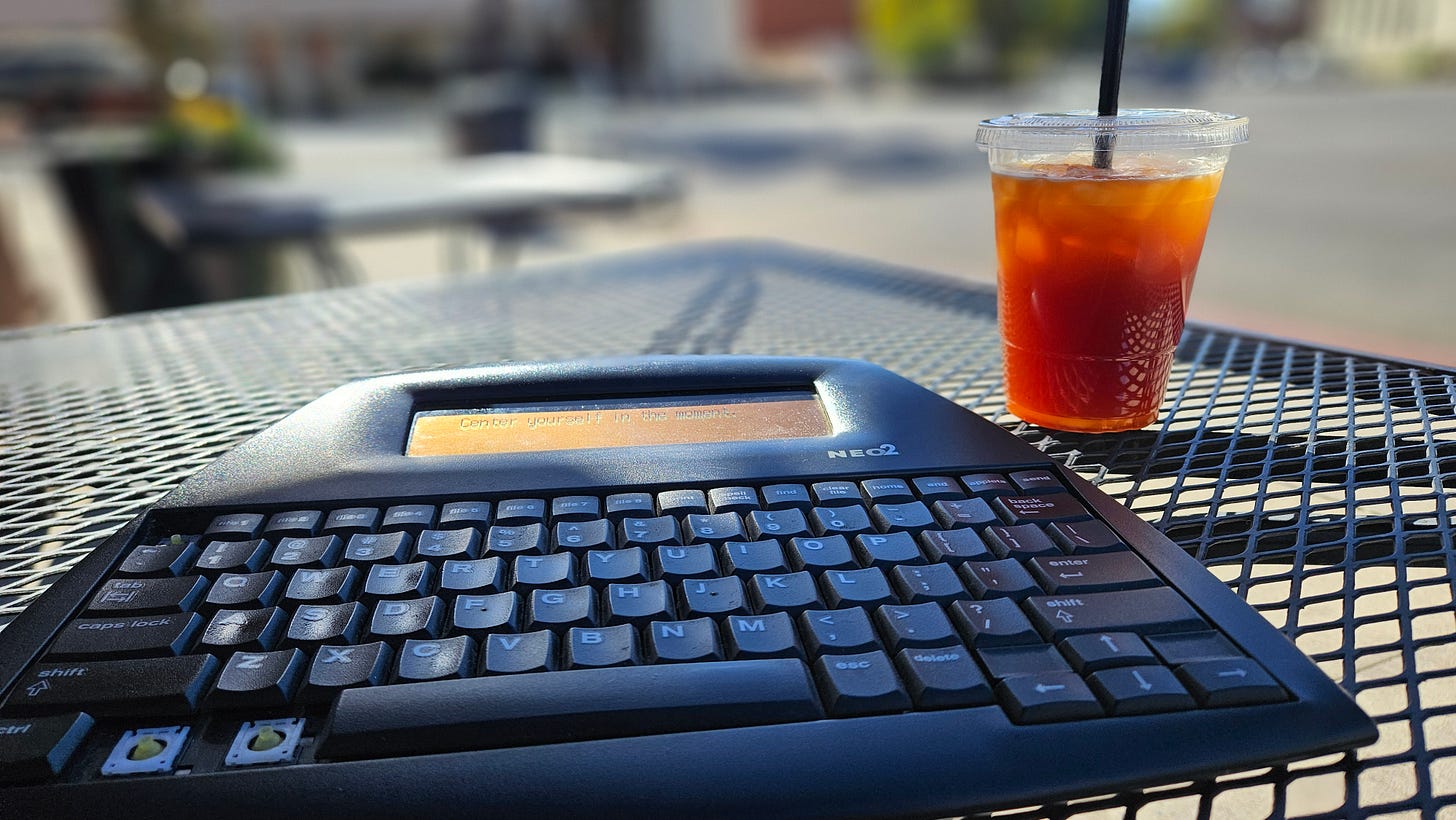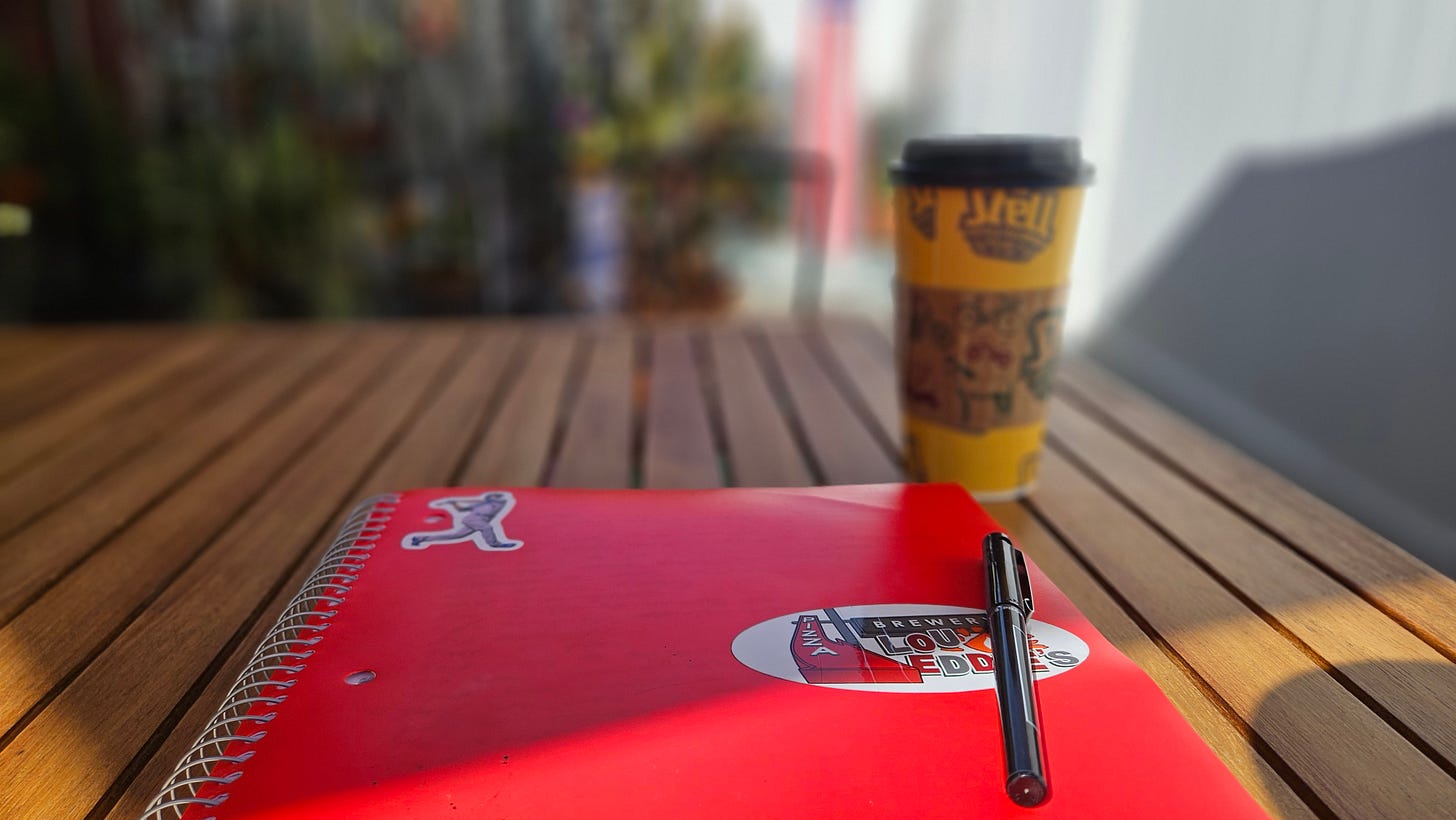Although writing is all wood pulp and ink at the end of the day, the way our brains create comforts and trappings around committing one to the other is fairly astounding, and opens up a world of possibilities. Every writer uses a combination of tools in order to express their ideas. We all have different emphases or desires, and the multitude of options allows us to really hone in what allows the creativity to flow.
If there’s two things the writer-brain wants consistently, it’s permission to write and an excuse not to write. Our toolkits fulfill both these needs in a way: the comforts of our setup ease us into feeling like this trapeze swing has a safety net, that the audience wants to see us fly high, while the nagging discomforts give us an excuse not to write, to stay on the platform nine stories high, holding our pen, lamenting, “Lo, for it is only this cheap quill which prevents me from soaring like God intended.” No craftsperson wants to be distracted or halted by their tool when they’re workin’ hard for the money, be it a dull chisel or a pen that skips or a too-small screwdriver or a malfunctioning keyboard. I’ve used the same kit for years and yet, every time I’m at Target, I find myself roving through the office supplies. This is why groups like writerDeck exist: we all are chasing the perfect tooling.
Admiral Akbar knows that this chase is a trap. Well, maybe not a trap—a spectrum. It’s mission critical to control the process, and sometimes that means finding the right tool. But new gear doesn’t necessarily help us or inspire us—it frees us, opening our process to landscapes where we often discover that the page is still blank, the cursor still blinks its slow pulse, the excuse-void now a vacuum, the Little Room Conundrum loops into itself.
This freedom is exactly what I thought would happen when I set out to get a typing pad: the room would become too big, and I’d ultimately shy away from using it. At the same time, I felt distracted when writing on my laptop, but I needed an intermediary to get the words from my journal into the digital age. It was clear something was missing.
Would I actually use it though? This question was a big driver toward choosing the Neo2. It was only like 50 bucks at the time. I needed to prove I’d actually use the damn thing before I could even think of committing to a device from Pomera or Freewrite—which, by the way, are around the price of a car payment while doing next to nothing on purpose.
Four years on, my typing pad’s seen a ton of love and, at this point, looks kinda like a carnival clown—the ones where you shoot the teeth out and win teddy bears. Companies don’t really make distraction free writing devices anymore for myriad reasons, although the niche market is there. Luckily, the belated AlphaSmart built their devices like absolute tanks. They’re designed to hold up to classroom use, and their sturdiness definitely shows—well, except for the way their key caps come off, but that’s far more of a me-problem.
At the core of my process, where much of the work I type originates, is an 8.5x11, 5-subject spiral bound notebook. I am more connected to the words when writing by hand, which is why almost every first draft originates between its lines. Writing everything out twice leads to work I feel more confident in right from the jump, albeit at a pace that’s slower than swimming in molasses.
These journals are gigantic, which is the point. I experimented with composition notebooks and smaller journals, Goldilocksing my way through the aisle until I found the one that lies flat and holds itself down and doesn’t take up a ton of storage space since it takes awhile to fill. When I started using them, I felt that sense of too much freedom. But I didn’t stop using them, as I had so many others. It became that the overwhelming size of its blank page encourages me to keep going, to fill it, to see the idea through.
The best and worst part of life is that everything happens in phases. The writing process is no different. One day, I’ll upgrade my typing pad or move laterally to a different model (the iMac chic of the transparent Alphasmart 3000 can only be denied for so long), I might find different journals that work better and serve to lament not changing sooner. The ancillary pieces will change: the pens may not always be Precise V5s, my headphones may go out, the book holder may break.
But.
In the here and now? Everything melds and flows in balance enough for the wall of resistance to break down, brick by brick, letter by letter, until I am free upon free to try upon try, which is all the words will ever ask of us.
-30-
⥁⥀⥁ Update Archives
⥁⥀⥁ Fiction
⥁⥀⥁ Appendices
⥁⥀⥁ Non-Fiction









Finding the right tools is critical to the flow and f ideas. Pen that medium & not fine, paper with too wide spaced lines, pages that don’t hold their shape or are too thin-all are damn stoppers for me.